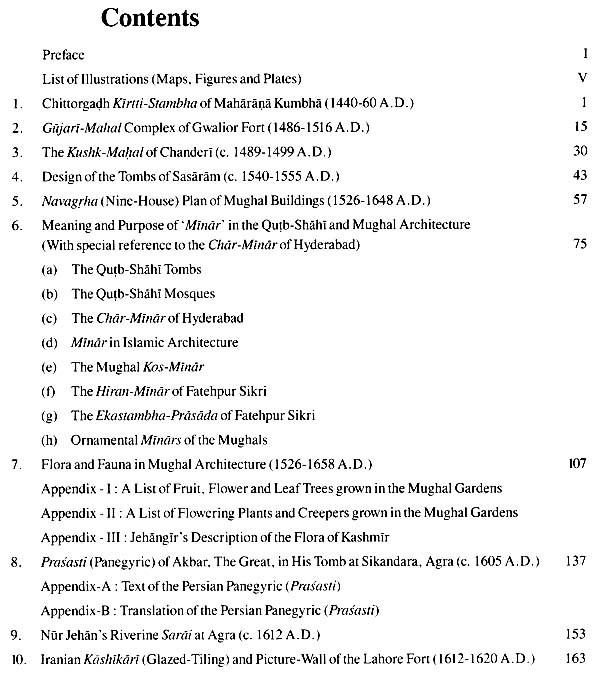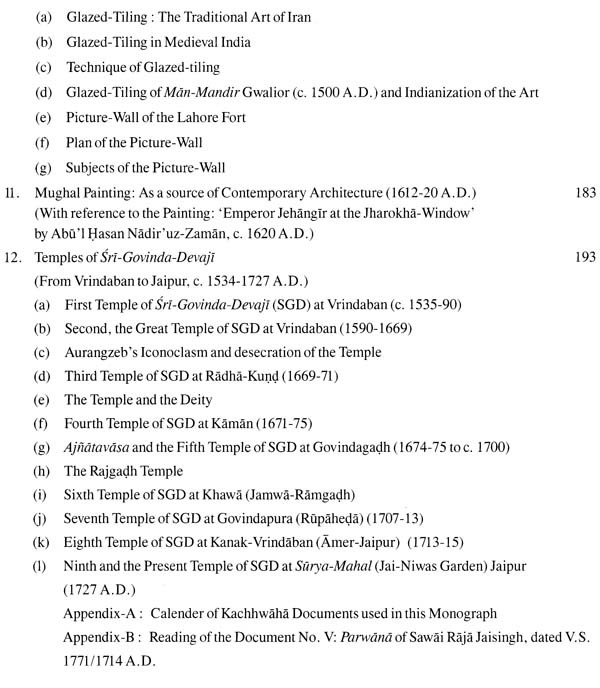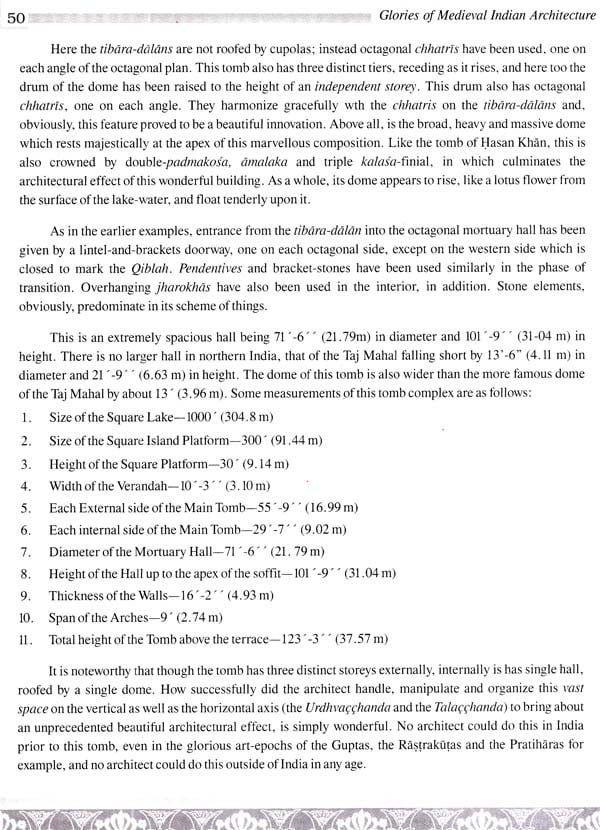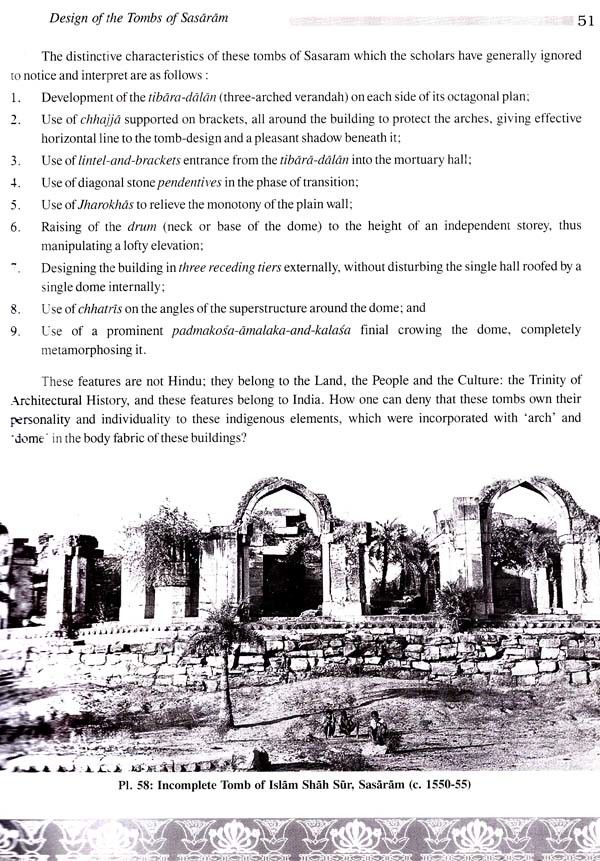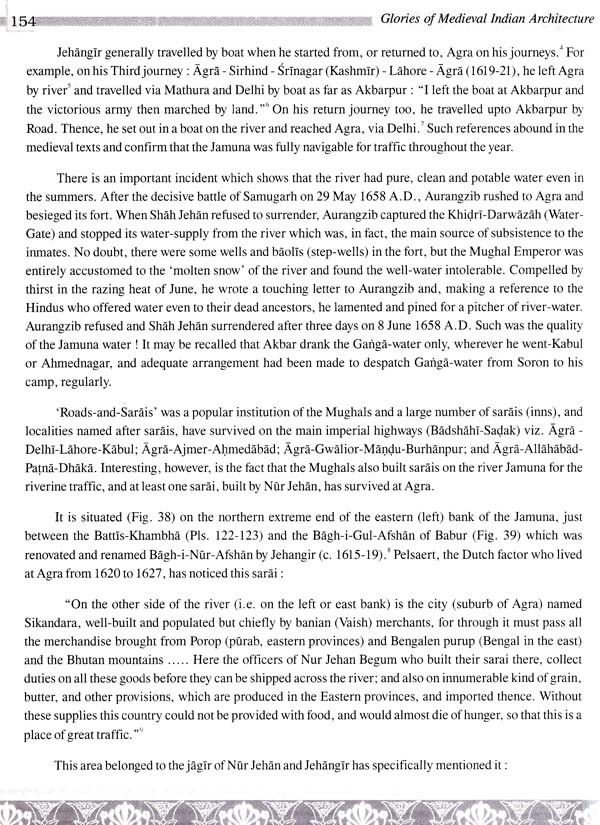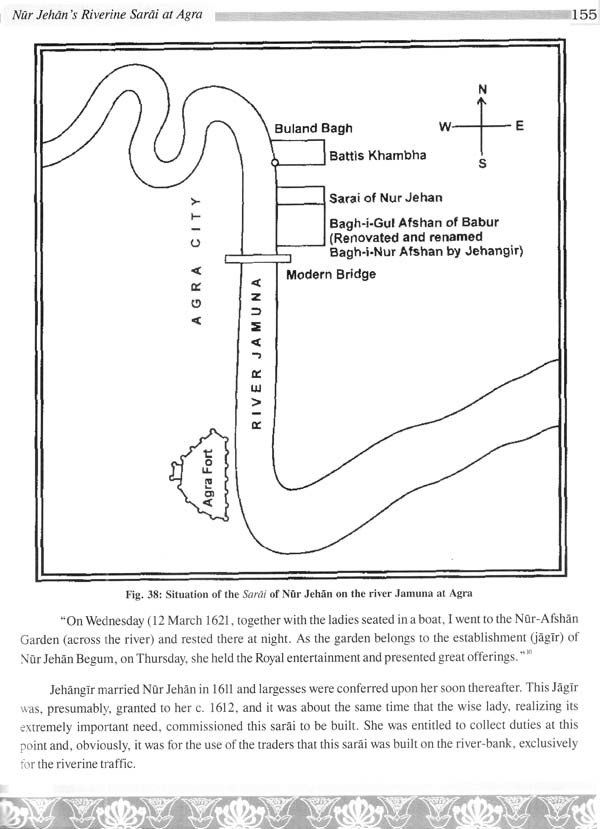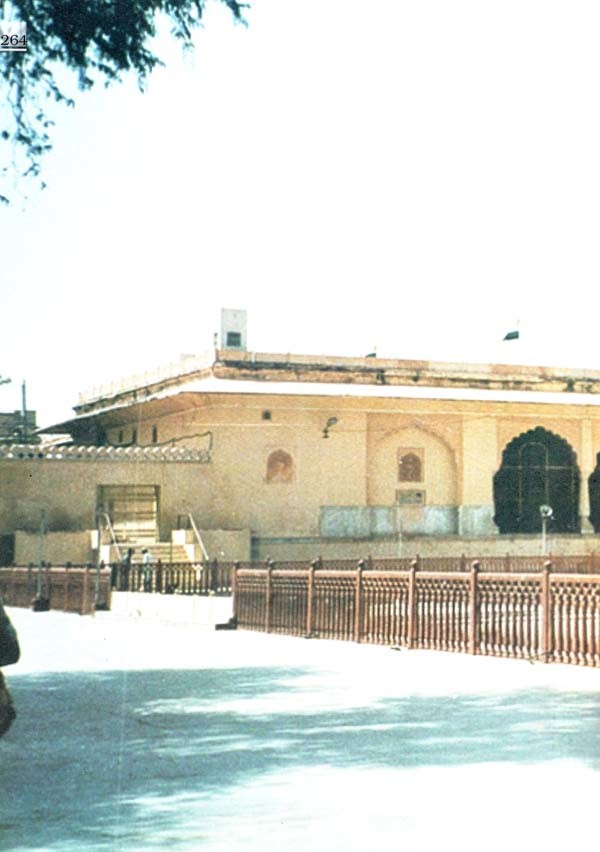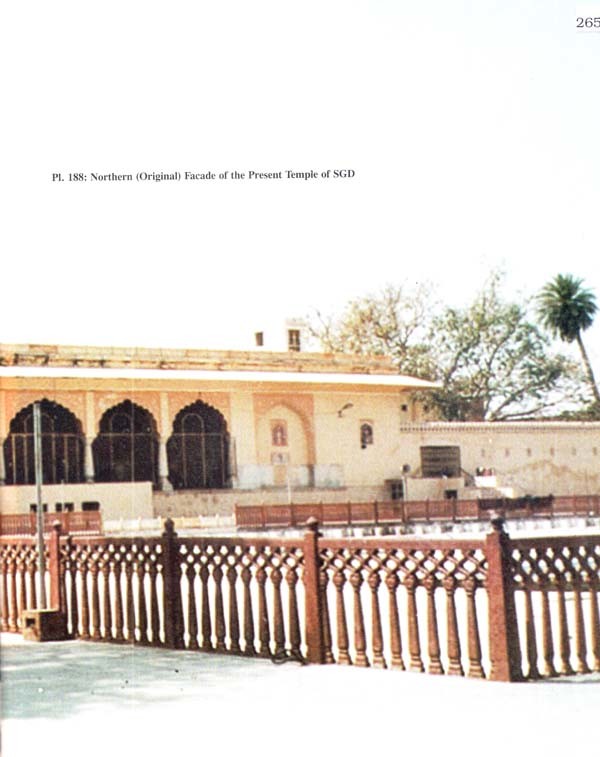
Glories of Medieval Indian Architecture
Book Specification
| Item Code: | AZE611 |
| Author: | R. Nath |
| Publisher: | B.R. PUBLISHING CORPORATION |
| Language: | ENGLISH |
| Edition: | 2010 |
| ISBN: | 9788176467179 |
| Pages: | 312 (Throughout Color and B/w Illustrations) |
| Cover: | HARDCOVER |
| Other Details | 11.00x9.00 |
| Weight | 1.77 kg |
Book Description
The last chapter is a full monograph on the itinerary of Sri Govinda-Devaji, and his nine temples built on the way, from Vrindahan to Jaipur, from c. 1534 to 1727 A.D. when the deity was fleeing from the iconoclastic decree of Aurangzeb and n a greater degree, it also Gears with metamorphosis of the Har Teng and the deity from the classical tick The Kachhwahas of Amer-Jaipur played an extremely important role in this temple movement, which has been highlighted in this work, for the first time.
He studied Ancient and Medieval Architecture in the field and worked at more than 50 historical sites of India. He has authored 67 books, 13 monographs, 190 research-papers, 300 popular articles, and more than 50 classical reviews, during the last five decades, including his basic works on style, theory, nomenclature, technique, aesthetics, sources. historiography, ornamentation, glossary and bibliography, which have made Mughal Architecture a perfect discipline. He is one of the front-ranking scholars and art historians of the country and an authority, of international repute, on Mughal Architecture.
He was recipient of several prestigious research fellowships, including fellowship of the Homi Bhabha Fellowships Council Bombay. He delivered the first Dr Hiralal Chopra Memorial Lecture at the Iran Society Kolkata, Salarjung Memorial Lecture at Salarjung Museum Hyderabad, the first Dr BR Grover Memorial Lecture to the joint session of the IAS and IHCS at SIAACM Emakulam (Cochin) Kerala, and Dr Moti Chandra Memorial Lecture at the All India Museums Annual Conference 2009 at Lucknow. He also delivered lectures at Heras Institute of Indian History and Culture Mumbai, and fine arts Dept Harvard University (U.S.A). He has been regularly attending or contributing papers to National and International Seminars and Conferences on this subject.
He Knows English, Hindi, Urdu, Persian, Sanskrit, and Gujarati. He has written several books on Ancient Indian Art, Architecture and Aesthetics, based on Sanskrit texts. These too have been widely acclaimed.
It covers historical sites from Agra-Fatehpur Sikri Dell to Sasaram in the cast, to Gwalior, Chanderi and Golconda-Hyderabad in the south, to Chittorgadh in the west, and to Lahore in the north. These buildings do not belong to a single architectural style. nor are they all Muslim They belong to different architectural styles and sub-styles, and they are both Hindu' and Muslim Medieval does not mean "Muslim alone. Such Hindu buildings as the Kirm-S of Maharana Kumbha at Chittorgadh (1440-60 A.D.); the Gajari-Mahal of Gwalior Fort (1486-1516) and the temples of Srt -Stambha Govinda-Devaji (from Vrindaban to Jaipur, c. 1534-1727 A.D.) which have been studied here, were built during the medieval period, and these too constitute Medieval Indian Architecure. These are also as grand and glorious relics of this age as are the Kushk-Mahal of Chanderi (c. 1489-99), the tombs of Sasaram (c. 1540-55) and the Tomb of Akbar at Agra (1605-12) for example. They truly represent the main trends and currents of medieval Indian Civilization, more than anything else does.
Some of these are lectures delivered at prestigious institutions and seminars in India and abroad, e.g. Chapter - 6: "Meaning and Purpose of Minar in the Qutb-Shahi and Mughal Architecture was delivered, in its original form, as Salarjung Memorial Lecture at the Salarjung Museum Hyderabad, and Chapter 10: Iranian Kashikari (Glazed-tiling) and the Picture Wall of the Lahore Fort was delivered as First Hiralal Chopra Memorial Lecture at the Iran Society Kolkata. Chapter - 8 is a paper read at the International symposium on the Role of Calligraphy on Islamic Architecture in India at the University of Iowa, Iowa (U.S.A.). Some articles have been published in research-journals, while some are unpublished. A few articles such as "Fauna and Flora in Mughal Architecture' were published in journals in abridged form. These are published here in full form, with essential appendices.
Ancient parasites (panegyrics) were historical document. Akbar's precast studied here is an architectural ornament too. It is integral to the building. This is how concepts were developing during the medieval period. Its importance lies in this and in the fact that it eulogises such a great King as Akbar, the like of whom appear only once in a millennium.
**Contents and Sample Pages**

